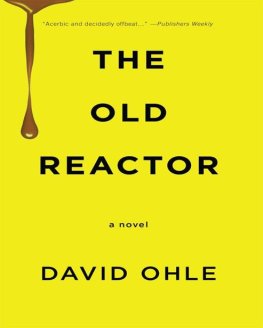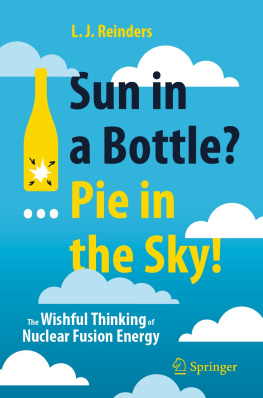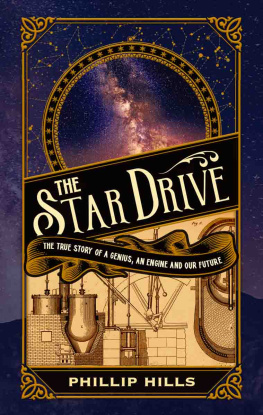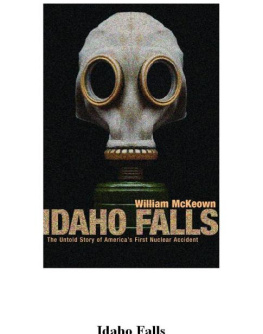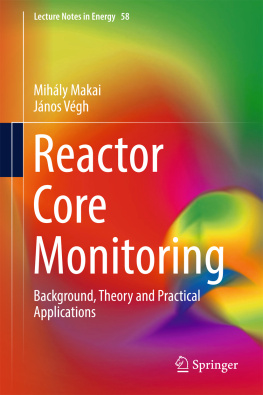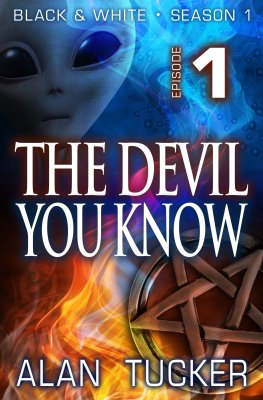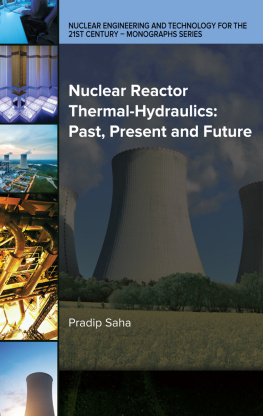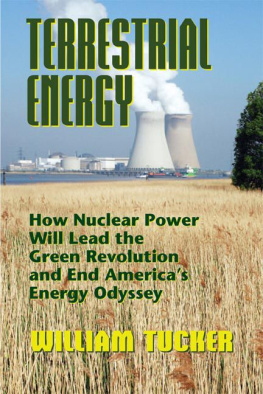Colin Tucker - How to Drive a Nuclear Reactor
Here you can read online Colin Tucker - How to Drive a Nuclear Reactor full text of the book (entire story) in english for free. Download pdf and epub, get meaning, cover and reviews about this ebook. year: 2019, genre: Romance novel. Description of the work, (preface) as well as reviews are available. Best literature library LitArk.com created for fans of good reading and offers a wide selection of genres:
Romance novel
Science fiction
Adventure
Detective
Science
History
Home and family
Prose
Art
Politics
Computer
Non-fiction
Religion
Business
Children
Humor
Choose a favorite category and find really read worthwhile books. Enjoy immersion in the world of imagination, feel the emotions of the characters or learn something new for yourself, make an fascinating discovery.
- Book:How to Drive a Nuclear Reactor
- Author:
- Genre:
- Year:2019
- Rating:3 / 5
- Favourites:Add to favourites
- Your mark:
- 60
- 1
- 2
- 3
- 4
- 5
How to Drive a Nuclear Reactor: summary, description and annotation
We offer to read an annotation, description, summary or preface (depends on what the author of the book "How to Drive a Nuclear Reactor" wrote himself). If you haven't found the necessary information about the book — write in the comments, we will try to find it.
How to Drive a Nuclear Reactor — read online for free the complete book (whole text) full work
Below is the text of the book, divided by pages. System saving the place of the last page read, allows you to conveniently read the book "How to Drive a Nuclear Reactor" online for free, without having to search again every time where you left off. Put a bookmark, and you can go to the page where you finished reading at any time.
Font size:
Interval:
Bookmark:
More information about this series at http://www.springer.com/series/4097


This Springer imprint is published by the registered company Springer Nature Switzerland AG.
The registered company address is: Gewerbestrasse 11, 6330 Cham, Switzerland
To Lynette
Have you ever wondered how a nuclear power station works? This book will show you, by asking you to imagine that youre a trainee reactor operator on a Pressurised Water Reactor (PWR), the most common type of nuclear reactor in the world. Itll take you on a journey from the science behind nuclear reactors, through their start-up, operation and shutdown. Along the way, it covers a bit of the engineering, reactor history, different kinds of reactors and what can go wrong with them. This book will show you how reactors are kept safe, and what it feels like to drive one.
So what inspired me to write this book? It was a conversation about a book entitledHow to Drive a Steam Locomotive(by Brian Hollingsworth). I was describing to a friend how the author puts the reader on the footplate of a locomotive and then gradually introduces them to the controls in front of them; what they each do; and what might go wrong. By the end of the book, it felt like you were really there. The conversation ended with me complaining about the lack of any similar book describing nuclear reactors. I have searched for such a book, but have found that most concentrate on energy policy or on nuclear accidents, with only a few short chapters on reactor operation. My experience is that often people want to know more.
So I decided to writethisbook. I hope you enjoy reading it as much as I enjoyed writing it. (Ill let you be the judge of whether or not it matches up to the original.)
As with many industries, nuclear power stations use a lot of jargon. Hopefully, you wont find this too off-puttingthere is an Index at the back, which may help. Different kinds of reactors use different jargon (of course!) and youll see that this book is heavily PWR-biased, though other reactors do make an appearance. Confusinglyespecially for people new to the industryits not uncommon for power station equipment to have two or more different names, often used interchangeably, especially if that equipment can have different functions at different times. Examples include using the word Containment instead of Reactor Building, Reactor Coolant System for Primary Circuit, Fuel Rod for Fuel Pin, etc. Ive tried very hard to only use single terms in this book. To my ear, and perhaps to others who work at PWRs, that makes some of the text feel a little clumsy. Hopefully, to everyone else it will make things clearer. My advice to anyone reading this book is not to get too hung up on the jargon; its the safe operation of the reactor that matters, not the labelling.
I want to start my acknowledgements by thanking my wife, Lynette, for encouraging me and helping me find the space and time to devote to writing this book. Its not easy to fit this sort of thing into your spare time without other things being displaced. I also need to thank my first readers, Nicholas Butt and Kevin Martin, who provided both technical and non-technical review comments which have (mostly) been addressed. It cant have been easy to read drafts of chapters when you dont have a clear idea of how its all supposed to fit together. Their patience and perseverance were much appreciated.
I owe an enormous debt of gratitude to the staff of the UKs Sizewell B nuclear power station. This has been my base for nearly 25 years, primarily working in the field of nuclear safety. Most of my experience of PWRs is Sizewell-based, and I accept that there are risks in this for an author; not every PWR is the same. I hope Ive been flexible enough in what Ive written for those at other PWRs (and indeed, at other reactor designs) not to feel excluded. Sizewell has a marvellously open culture where Ive found that I can ask questions on anything to fill gaps in my knowledge. Beyond this, Id especially mention the support from the Management Team and from EDF Energy Corporate staff with this project. Their enthusiasm for it from the outset, without interfering in any way with its content, has made it so much more achievable.
Finally, I should mention the Nuclear Safety Group at Sizewell B. Their depth of knowledge, experience, willingness to challenge, patience and rigour go a long way to keeping Sizewell B as safe as it is. Their humour makes it enjoyable! This book, though ostensibly concerned with reactor operation, probably comes closest to a view of the world as its seen from the Nuclear Safety Group. Make of that what you will
The majority of the content of this book is my own. Where opinions are expressedand there are a fewthey are also mine, and do not in any way reflect the views or policies of EDF Energy or of any other company. That, of course, means that any errors that you find must also be mine. For these, I apologise and say well done! if youve spotted one.
Personally, I find nuclear reactors fascinating. I hope you will too.

Ive heard it said that a modern nuclear power station could be operated by one man and a dog. The man would be there to feed the dog, and the dog would be there to bite the man if he touched any of the controls
Font size:
Interval:
Bookmark:
Similar books «How to Drive a Nuclear Reactor»
Look at similar books to How to Drive a Nuclear Reactor. We have selected literature similar in name and meaning in the hope of providing readers with more options to find new, interesting, not yet read works.
Discussion, reviews of the book How to Drive a Nuclear Reactor and just readers' own opinions. Leave your comments, write what you think about the work, its meaning or the main characters. Specify what exactly you liked and what you didn't like, and why you think so.


